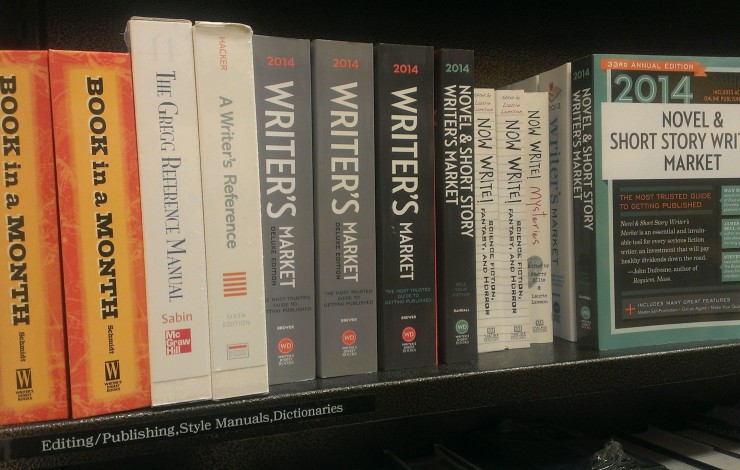How to Write an Effective Non-Fiction Book Proposal: Eight Critical Components Every Pitch Needs
For first time authors, and even seasoned ones, the process of writing an effective book proposal may seem daunting. Many often wonder where to begin and what type of content to include. If this describes you, then these tips will help guide you. Think of a book proposal as a business plan for your book. There are certain elements that every business plan needs. The same holds true for a non-fiction pitch. Here, I have provided eight critical components to get you started.
Cover Letter
Do not overlook the importance of a well-written cover letter. Hopeful authors inundate editors with an overwhelming number of proposals on a daily basis. So much so that it is impossible for editors to review them all. Your cover letter is a testament to your writing ability. Follow these simple guidelines for a better first impression:
Address your cover letter to a specific editor rather than the generic To Whom It May Concern. Books like the Literary Market Place (LMP) and Writer’s Market provide detailed lists of contacts in the industry. If you do this, you have a good chance at preventing your proposal from landing in the slush pile.
Provide a brief description of yourself, the title and description of your book, market appeal, and hook. Briefly explain what makes your book unique.
Keep the length of your cover letter to a page, and no longer than two. The point of a cover letter is to entice the reader to read more. Do not reveal your entire argument here.
Read your proposal out loud. This may sound odd, but you will catch more errors if you follow this advice. If you litter your work with punctuation and grammar errors, editors will most likely toss your work aside.
Table of Contents
A well-written book proposal needs a table of contents. This helps the editor or agent find information quickly.
Book Overview/Summary or Purpose
Here you will expand on the description that you provide in your cover letter. Limit your summary to a page. Be sure to highlight the most important parts of your book first, starting with the hook.
Marketing Plan
Authors often bypass this vital step or they create broad, generic statements that lack weight. You must specify your target audience. Be specific. Do not say, “My book will appeal to everyone,” as this is not the case. Also, do not limit your audience entirely. Some niche markets tend to deter publishers because potential sales numbers may not cover production costs. You must find a balance. If your target market is too small, then you may want to consider another outlet for your message.
Include a detailed market and demographics analysis as well. Highlight key research that helps establish a need for your book. If you have celebrity endorsements lined up, list them. If you have speaking engagements or book signings lined up, list them too. Include numbers. If you plan to do an email blast from the 10,000 contacts you have acquired from your book-related blog, let the publisher or agent know. How many unique visitors does your website have? How many Twitter followers do you have? How about Facebook friends or fans? To the publisher, high numbers indicate a built-in audience.
Competitive Titles
Give a brief overview of five or six comparable titles, preferably those printed within the last five years. Focus on those that have sold well. Those that haven’t only reflect poorly on your submission. Additionally, if the market is saturated, editors will most likely reject your book, unless you have a great hook.
About the Author
This section contains two essential elements: your credentials and author platform. Your credentials qualify you for the job. Successful authors don’t advise other writers to write what they know out of malice. This steadfast rule has merit. After all, you wouldn’t let a musician perform open-heart surgery now would you? In this section, you will list any degrees or certifications you may have, your current and past work history, any awards you may have received, your birthplace, and your current place of residence.
Your author platform gives the publisher a good indication of your influence over your target market. Provide them with a list of your previously published works, speaking engagements (both past and present), and all media appearances or mentions in radio, television, and print formats. You will want to include information regarding your online presence as well: what social networking accounts, websites or blogs you maintain or write for.
Chapter-by-Chapter Outline
List each chapter title and subtitle in a table-of-contents format and provide a brief description of each. One or two paragraphs will suffice.
Introduction and Sample Chapters
Make sure you include at least two sample chapters along with your introduction. While the introduction is not necessary, a well-written one provides the editor or agent with further insight into the book’s purpose, its content, and its overall theme and tone. While many editors and agents prefer to receive the first two chapters of a book, you may choose to submit your strongest two.
Final Thoughts
Now that you are up to speed on the basics, remember to add page numbers to your pitch and to consult The Chicago Manual of Style for grammar and punctuation rules.

Leave a Comment